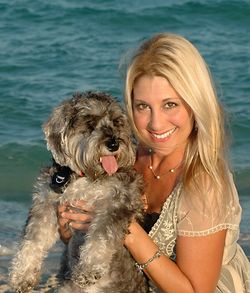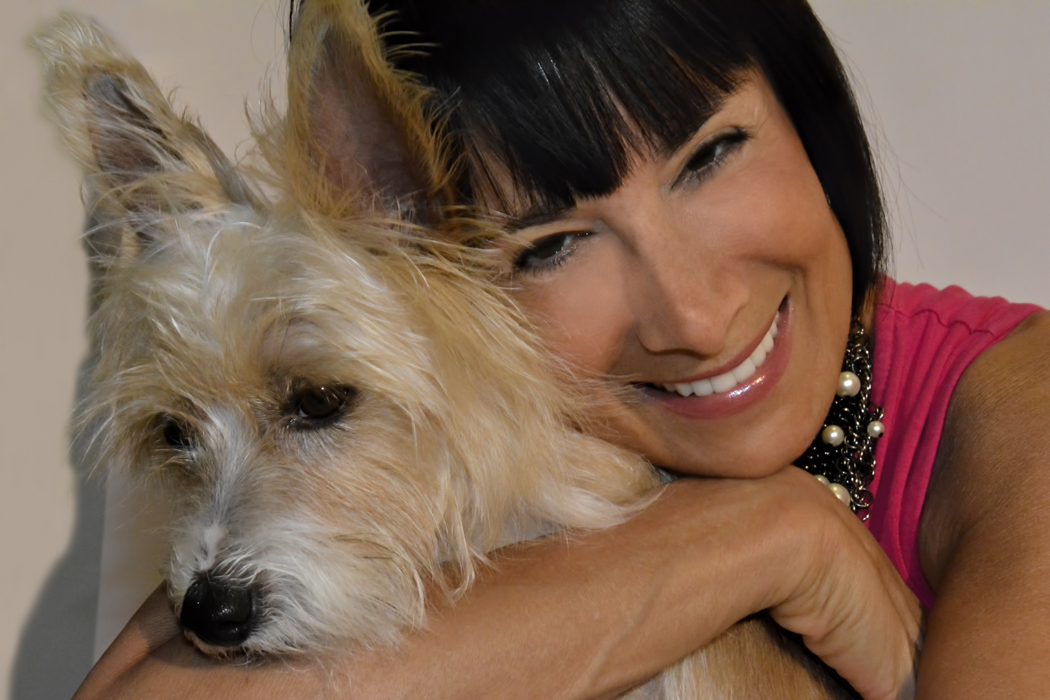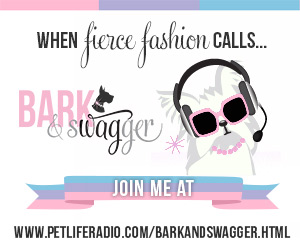Whether you live in a big or a small city, there are certain encounters our dogs will have that differ from the experience of country canines. From the time Sophie was 3 months old, she had to adjust to wailing sirens, hordes of pedestrians, and a bombardment of dogs and children of all sizes and shapes And, that was just on our walks! Apartment living is an adjustment, as is managing the social environment of parties, big department stores or doggy daycare our babies may be faced with. So, when I learned that celebrity dog trainer, Nikki Moustaki, was an urban dog and shelter dog training expert, I thought it would be interesting to find out more about what this is, how it differs from traditional dog training, and how it might help us city dwellers.
* Nikki is generously offering to personally answer the first Bark and Swagger follower to ask a training question in the Comments below. She has also agreed to send the first two Bark and Swagger followers to add comments on this article, a copy of her book, Dogfessions, described: “…this full color collection contains hundreds of handmade postcards that reveal the deepest confessions from dogs and their owners. From unabashed admissions (“Yes, I made that puddle 5 minutes ago”) to thoughtful revelations (“I think I kiss the dogs more than I kiss my husband”) to self-affirmations (“I do this deliberately to look cute”), you’ll steal a glimpse into the lives of dogs and their dearest devotees.”
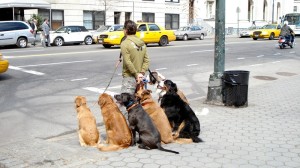 Who Is Nikki?
Who Is Nikki?
Nikki Moustaki’s two passions are pets and writing, and she’s quite accomplished at both. Having written 45 books on topics ranging from dog training and parrot care to choosing a college, Nikki holds both a Masters of Art and a Masters of Fine Art degree in poetry. Her books are published in five languages and have sold upwards of half a million copies. She is considered to be one of the country’s leading exotic bird experts, with 25 books on various types to her credit.
Nikki’s love of dogs led her to dog training and she’s now known as the urban dog guru, helping thousands of dog parents in cities around the country learn how to understand their pooches better, and helping their dogs lead more calm, happy lives. Moustaki is also an ardent rescue dog advocate, so much so, that she has been given the name, “St. Nik.” She has written articles for Dog Fancy, Popular Dogs and Dogs USA, and writes a regular rescue column, “MUTTerings,” for Dog Fancy magazine’s website, DogChannel.com, and a training column called “Ask the Trainer” for iLoveDogs.com.
I asked Nikki to explain her philosophy of dog training and give us some tips for some of the most common issues.
BaS: How would you define urban training?
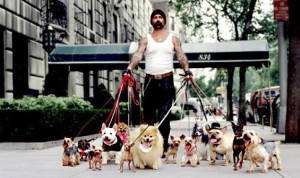 NM: The urban dog has significant issues to contend with that the suburban or rural dog does not. For example, dogs need to be taught to sit at each curb rather than charging across the street — and there are often a lot of curbs in one walk! The urban dog needs to be taught to do his business at the curb edge of the sidewalk, not in the middle of it. He needs to be very well socialized because he is going to meet people and dogs of all walks of life. If he’s aggressive, we have to deal with that as well, because the urban dog meets children, smaller dogs, and people who will reach out to touch him without asking. He will meet people that are scared of dogs or just don’t like them and they might yell at him or behave in a way that’s frightening. He has to learn to behave in retail stores and at events that he can attend. Dogs that live in apartments need to learn not to bark all day, and they need to learn to “hold it” going down a lot of stairs or inside an elevator. I use clicker training to address a lot of these behaviors.
NM: The urban dog has significant issues to contend with that the suburban or rural dog does not. For example, dogs need to be taught to sit at each curb rather than charging across the street — and there are often a lot of curbs in one walk! The urban dog needs to be taught to do his business at the curb edge of the sidewalk, not in the middle of it. He needs to be very well socialized because he is going to meet people and dogs of all walks of life. If he’s aggressive, we have to deal with that as well, because the urban dog meets children, smaller dogs, and people who will reach out to touch him without asking. He will meet people that are scared of dogs or just don’t like them and they might yell at him or behave in a way that’s frightening. He has to learn to behave in retail stores and at events that he can attend. Dogs that live in apartments need to learn not to bark all day, and they need to learn to “hold it” going down a lot of stairs or inside an elevator. I use clicker training to address a lot of these behaviors.
BaS: In urban settings, some dogs (like Sophie) get anxious about the noise, crowds, traffic. What are some tips you can give to help lessen their stress in these situations?
NM: Ideally, a dog is socialized to noise and people before 20 weeks of age (or so), when the socialization period closes. After that, it’s no longer about socializing the dog, but desensitizing her to her surroundings. I do that with positive reinforcement and a lot of treats. Arrange for the dog to be presented with the stressor. Then distract the dog and ask for an easy behavior, like sit, and reward that with a treat. Don’t reward shivering, cowering, barking, or whining. You want to wait for the nanosecond that your dog stops that behavior, perhaps because you’ve distracted her, and then you reward. Eventually the dog will start to associate the scary dump truck with treats and fun and eye contact with you.
 BaS: What are your tips to having a calm, happy dog?
BaS: What are your tips to having a calm, happy dog?
NM: You have to speak your dog’s language. Don’t expect a dog to learn your language before you learn his. Communication is about meeting in the middle, not expecting the other party to come to you. So many dog owners come to me and say that their dog doesn’t listen to them. Really? But are you listening to your dog? People don’t even understand what this means, but if you observe your dog closely and learn about canine body language and behavior, your relationship will rise to the next level. If your dog feels that he’s being understood and you are fair with him, then he will be much easier to train. New dog owners live with their dogs as if they are furry aliens from another planet. That has got to be frustrating for a dog.
Nikki’s book Dogfessions, which helps us decipher the language of dog, is available for purchase by clicking on the picture to the right
BaS: What are the key things for a dog parent to know or do to be successful when training their dog?
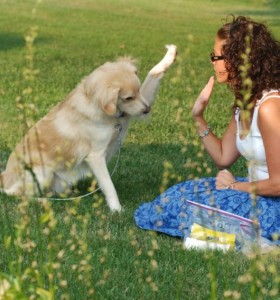 NM: Be fair with your dog and use positive reinforcement. Understand how she thinks and why she behaves in certain ways. People want their dog to obey, but that’s not what a relationship is about. Your dog is not a child, not a servant, not an employee — she’s your friend, and with friendship comes communication. Learn what motivates your dog and use that to your advantage. People tend to not know when to praise their dogs. One thing that drives me a little bonkers with dog owners and training clients is their idea of time, based on human experience. When a dog barks and I want him to stop, I’ll ask him to come to me, give a treat, then sit, give another treat. The dog owner says, “You just rewarded him for barking!” No, I didn’t. I rewarded him for coming to me quietly and sitting. Let’s say this dog is a chronic barker — he can’t bark all the time, can he? But the owners don’t praise when the dog is quietly laying on his bed, they just yell at him when he barks. He has no incentive for being quiet because he’s ignored then, but he gets attention when he barks.
NM: Be fair with your dog and use positive reinforcement. Understand how she thinks and why she behaves in certain ways. People want their dog to obey, but that’s not what a relationship is about. Your dog is not a child, not a servant, not an employee — she’s your friend, and with friendship comes communication. Learn what motivates your dog and use that to your advantage. People tend to not know when to praise their dogs. One thing that drives me a little bonkers with dog owners and training clients is their idea of time, based on human experience. When a dog barks and I want him to stop, I’ll ask him to come to me, give a treat, then sit, give another treat. The dog owner says, “You just rewarded him for barking!” No, I didn’t. I rewarded him for coming to me quietly and sitting. Let’s say this dog is a chronic barker — he can’t bark all the time, can he? But the owners don’t praise when the dog is quietly laying on his bed, they just yell at him when he barks. He has no incentive for being quiet because he’s ignored then, but he gets attention when he barks.
BaS: How would you define shelter dog training?
NM: A shelter dog is an unknown entity. That’s scary for some people, but I love the idea of a dog who has “a past.” For the most part, an owner of a shelter dog will never know what happened to their dog in a previous home, but if you watch a dog closely he will tell you exactly what his experience was like. If a dog is a resource guarder and doesn’t like to be picked up, I will assume that there were children in the house that didn’t handle the dog well, and that’s why he ended up homeless. There’s something that made the dog this way, that gave the dog these behavioral traits. I’d say that dog behavior is about 50% nature and 50% nurture, so, aside from obvious breed behavior traits, other behaviors have been formed in the dog via experiences. If you can give the dog time to realize that life in this new home will be different, unwanted behavior often changes by itself.
BaS: What are the most common training issues people have with their adopted shelter dogs?
NM: The first issue is usually potty training. A shelter dog will most likely “make” in the house the first couple of days, and owners call me, frantic that they’ve chosen the wrong dog. I tell them to give it time and walk the dog a lot, and that usually solves the issue. Obviously, giving the dog plenty of chances to go potty is important. Don’t shame the dog if he makes in the house. Male shelter dogs will often “mark their territory” the first couple of days, but this behavior should fade after the dog is neutered.
 The second issue I see a lot is separation anxiety. Speaking in broad terms, shelter dogs can lack confidence, so they may bark and whine when a new owner leaves the house, which can cause issues with neighbors. Some dogs may destroy household items because they are so anxious. This is a complex issue to resolve and is often tailored to the individual dog.
The second issue I see a lot is separation anxiety. Speaking in broad terms, shelter dogs can lack confidence, so they may bark and whine when a new owner leaves the house, which can cause issues with neighbors. Some dogs may destroy household items because they are so anxious. This is a complex issue to resolve and is often tailored to the individual dog.The third issue I see is aggression. Shelter dogs have been through a lot — hands poking and prodding, maybe not being handled nicely, fearful situations — and they can show teeth, growl, and snap. In my experience, this is not a reason for real concern, and usually fades after a few days of decompressing in a new home. Give the dog time to relax. Give him a big can of dog food and some treats, and approach him slowly and with caution. Let him realize that he’s safe and he’ll be in your lap in no time. If he has a genuine aggression issue, it will become obvious. Bringing in a dog trainer is essential for aggression issues.
NM: The Pet Postcard Project is a grassroots arts-and-crafts project aimed at raising food for shelter pets and awareness about the plight of homeless animals. “Pet Postcards” for this project are homemade and handmade postcards featuring people’s own pets that they make and then snail mail into The Pet Postcard Project. Each card received earns food for shelter dogs and cats. So far, this project has has received many thousands of funny, weird, sad, cute, and profound cards, all filled with love for a beloved pet, and has raised over 300,000 pounds of food for shelter animals.
- A pet food company agrees to pledge a certain amount of food per postcard that comes in. Sometimes it’s a “meal” (1/3 of a pound), sometimes a pound, sometimes much more – once we had a 128 pound per postcard pledge! Sometimes a company will pledge toys or even cash for each card that comes in.
- Next, someone “adopts” the campaign, which lasts 1 to 2 months. A cat or dog, several animals who form a team (Spokesanimals), sometimes even a high school, Girl Scout troop, college club, school district, or even a pet-loving company choose a shelter to be the recipient of the food, and drive cards into The Pet Postcard Project mailbox through their social networks (Facebook, Twitter, etc.) and friends and family.
- At the end of the month, cards are tallied and the shelter is sent the food or other products. Often there’s a card goal, and every Spokesanimal or team has always met the goal and every shelter has always gotten the food/products.
BaS: For people that may want to get your dog training books, which do you recommend?
NM: I’d recommend Pocket Pups and Boredom Busters.
BaS: Thanks so much, Nikki!
You can get involved in The Pet Postcard Project here.
You can follow Nikki on Facebook and Twitter.
Summary
Training our pups, for many of us, isn’t easy. I think Nikki broke it down in a couple of common threads we can focus on:
* The tactic of distraction, asking for a simple behavior and then treats is her method of basic training
* Observe our dogs to see what motivates them
* Listen to our dogs to help learn their language (also goes hand-in-hand with what motivates them)
* When trying to discourage negative behavior and promote the positive, wait for that split second they stop doing what we don’t want and then treat them. And also treat them when they are being quiet and relaxed, in general.
* Shelter dogs, in the first few days, maybe have accidents in the house, exhibit separation anxiety and aggression. Give them plenty of potty walks, treats and encouragement and approach them slowly with treats, if aggressive. If aggression persists, find a good trainer to address.
* Reaping the rewards of any training technique takes time. Having patience and being consistent each day will produce results.
Do you have any specific training challenges? What have you found that works?
Be the first to ask your training question and get a personal answer from Nikki. Be the first TWO to add Comments and win a copy of Nikki’s Dogfessions book!


